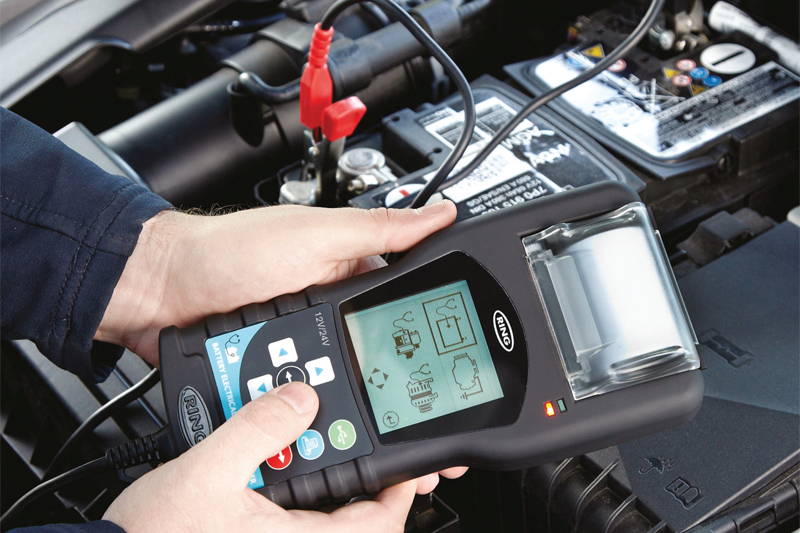
The winter months can be hard on vehicle batteries. Henry Bisson, Marketing Manager at Ring Automotive explains what workshop technicians can do to alleviate the stress caused for vehicle owners by failing batteries.
It should be the responsibility of technicians to test every battery before they start work on a vehicle. With the colder months and changing temperatures causing the electrolyte in batteries to evaporate, it should be at the top of a technician’s winter servicing list to avoid the unit resulting in premature failure.
Low battery status will provide false readings, and intermittent starting can lead to incorrect diagnosis. You would never expect a technician not to have a spanner to remove a nut, so why not have a battery analyser as an essential in your tool kit?
Battery-charging solutions
Ring’s RBAG750 Graphical Battery Analyser, is state-of-the-art battery testing equipment. It offers battery, alternator (standard charge, semi smart and full smart charge) test and starter test for all battery types, with the ability to record, print and save the vehicle data.
As a backup to the discerning technician, Ring offers the RMM500 multifunction automotive tester, designed specifically to find electrical automotive faults. The RMM500 only has settings relevant for automotive use. It has all the functions of a normal multi-meter plus frequency measurement, the ability to check fuses in-situ and carry out parasitic drain testing.
These two units are also self-calibrating and use graphical interfaces making it easy to use and understand.
Common errors
A common error when servicing batteries is standard wet battery testing while the battery is in a state of poor charge. The best practice is to always test a battery that is charged. Technicians, when working on vehicles with AGM and EFB batteries, should ensure that a test is performed before work starts and that those batteries are then support charged throughout, with a full functional test carried out before the vehicle is handed back to the owner.
Over the past 18 months, a lot of vehicles have been left standing due to the change in lifestyle caused by the pandemic. The majority of car users are unaware that their battery is losing charge while the vehicle is stood still. This has caused numerous problems on all vehicle types with the emphasis on vehicles fitted with AGM and EFB batteries.
It is recommended that any vehicle that is stood longer than three to four weeks should have the battery put on charge (preferably with a smart charger).
This does necessitate the removal of the battery from the car, as smart chargers are designed to test, repair and stabilise battery charge as required. An example of a smart charger for the car owner is the Ring 800 series, whereby a one-way end plug can be fitted by the local garage to ensure correct use.
For the professional technician, Ring offers a range of trade style smart chargers for a wide range of domestic and commercial vehicles, which feature a battery support function while working on the vehicle.
Smart chargers optimise the battery performance and prolong its life. Trickle chargers will add charge, but if forgotten about can overcharge and damage a battery. It is therefore much safer to use a smart charger.









